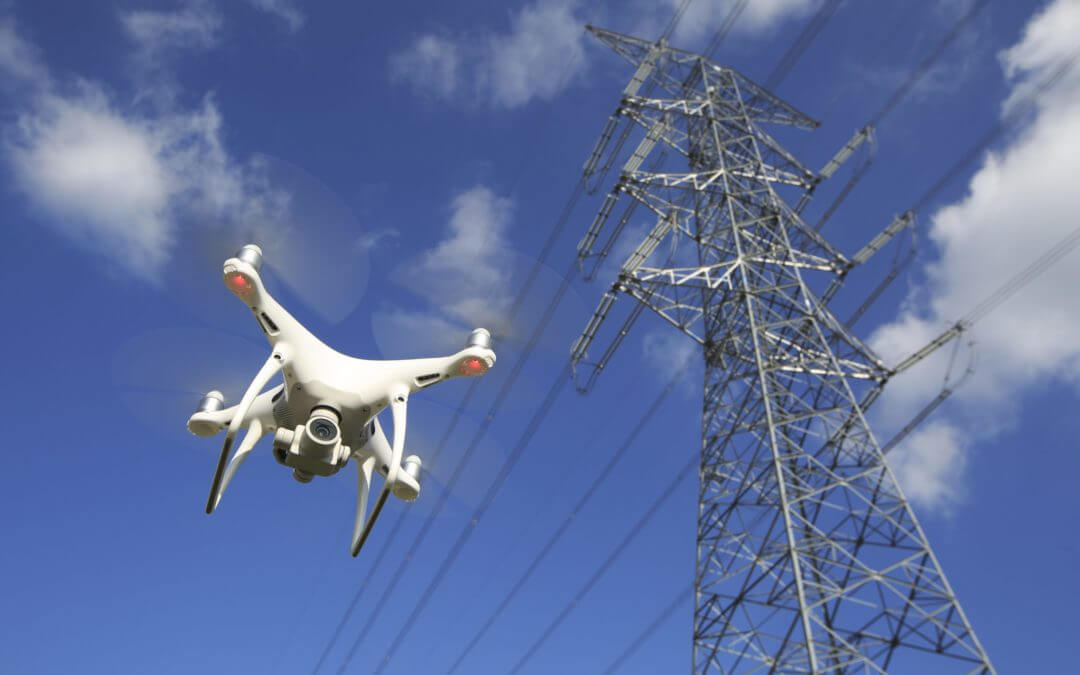Ken King started seeing small drones come on the market and on the internet in 2012 and simply fell in love with them and all their capabilities, especially industrial drones.
Now he builds huge industrial drones that save lives.
Only two short years after he became infatuated by them, Ken started building drones in 2014, before he started working with Freespace Drone Racing, now Freespace Operations.
One thing led to another and Ken became a partner with the company and Freespace Operations was commercialised based on some huge successes in the industrial drone space.
Ken is now co-founder, managing director and chief remote pilot at Freespace Operations. Freespace focuses on large-scale industrial drones for heavy payloads – and is a perfect example of “drones for good”. Ken is our guest on the Drones for Good podcast.
Industrial drones are designed to withstand fatigue and repeated use and work all the time to be dependable and reliable.
And that’s what Freespace Operations ensures with its industrial drones.
“We provide an industrial platform to allow life-saving operations such as dropping items to stricken people in the water or over heavy terrain, and autonomous cargo delivery with heavy payloads,” Ken says.
Freespace Operations is an Australian company with a product that will help the world.
What does the future for industrial drones?
According to Ken, the future is big and bright as these drones are used more for physical activity.
“We see them into getting into the physical realm, rather than just being an observer, now we can physically get in there now and actually do physical activities, such as picking up cargo, spot spraying of weeds and getting rid of vermin. We also can manipulate with a robotic arm to push, pull and grab things, we can air drop cargo safely or pick something up out of the water. There are no constraints,” he says.
Industrial applications for drone automation include:
- Powerline stringing of towers doing the work helicopters would do.
- Delivery tools across mine site or take samples back.
- Keep dust down by spraying water regularly.
- Send a system into an area to get a sample where there are noxious gasses.
- Washing insulators or powerlines.
The two technical aspects to building a drone
There are two parts for building an industrial drone to make sure it withstands the hard work it’s designed to do: Hardware and software.
- Hardware – there’s a myriad of components. It’s like building a computer – you can go to a PC store and select the components, build it and it will work. But how good will it work? When you build them yourself, you need to anticipate what could happen (or go wrong).
- Software – we have access to open-source software systems and install autopilots onto hardware that is fit to fly.
It’s easy to say that large and industrial drones will work, but until you test them you won’t know. The bigger drones just don’t operate the same as the smaller drones.
“You are dealing with much bigger frames, more vibration, big power systems, hundreds of amps of current, and high voltages. Then there is also the consequences such as you are flying outside the standard licensing brackets,” he says.
There’s a lot to a drone and building an industrial drone – and all of this is done here in Australia.
Conclusion
At Mirragin, we apply our expertise and knowledge in the UAV industry to help our clients solve problems.
The drone programs we design for clients are built to stand the test of time – even in an ever-changing industry like unmanned systems. Our focus is always on solving our client’s problems in an efficient and effective way and our creative solutions draw from years of UAV experience and industry knowledge. To learn more about what we have to offer, view our services here.
Find out more about drones and their future in business, subscribe to our podcast.

